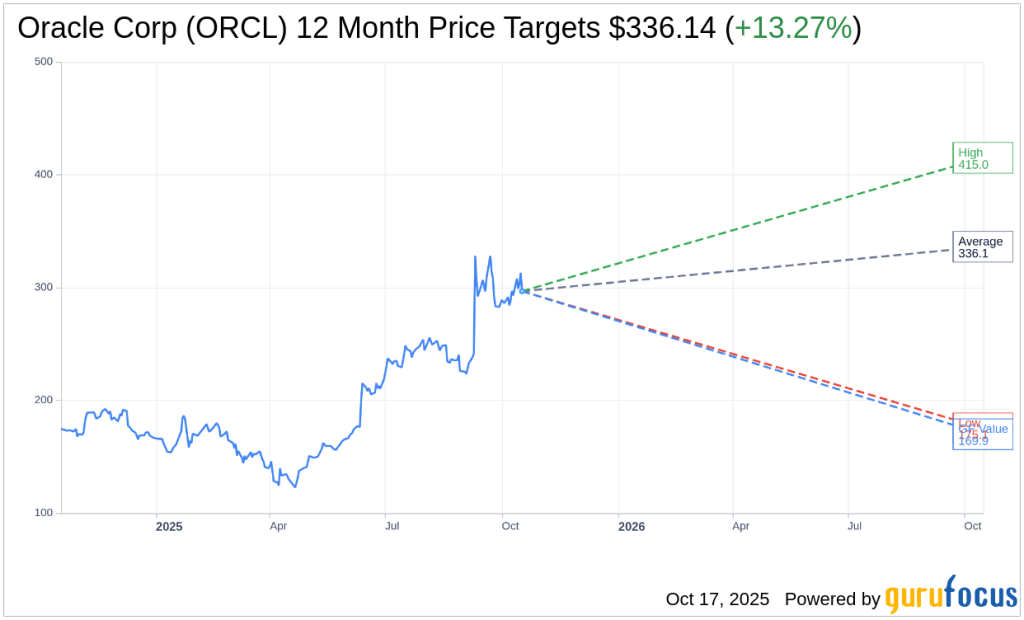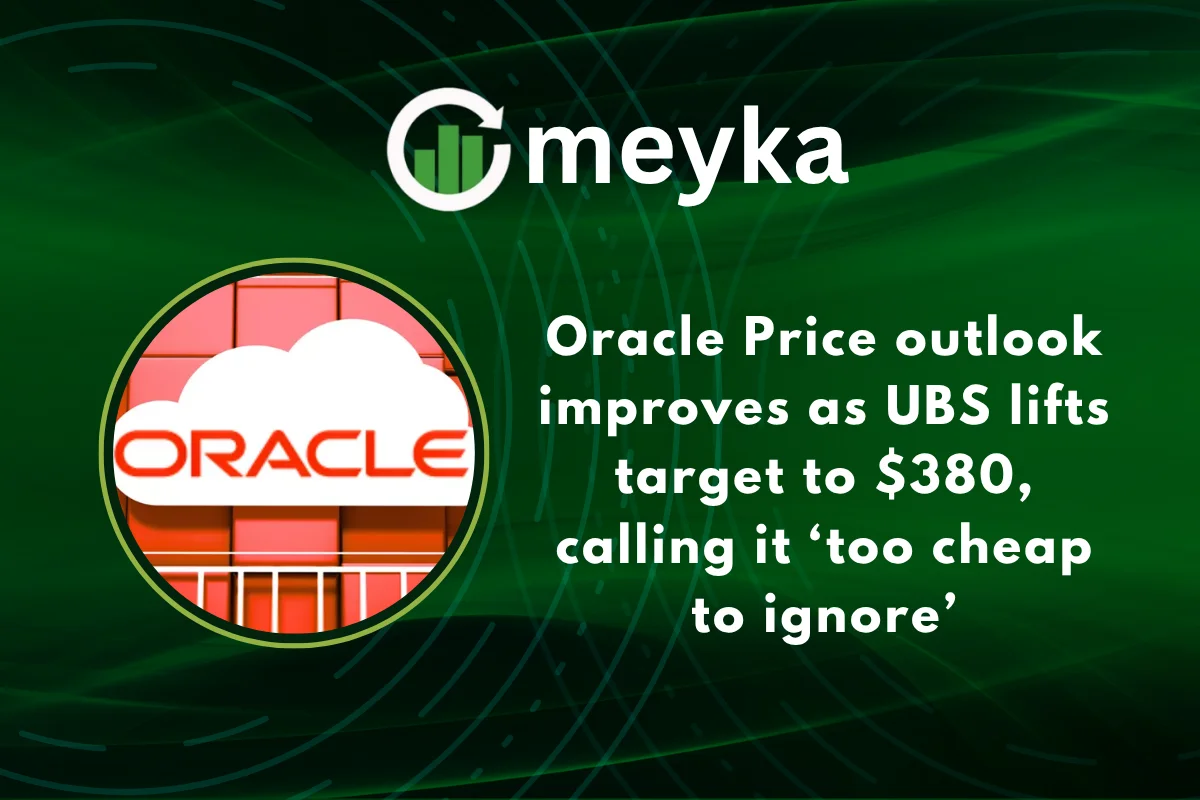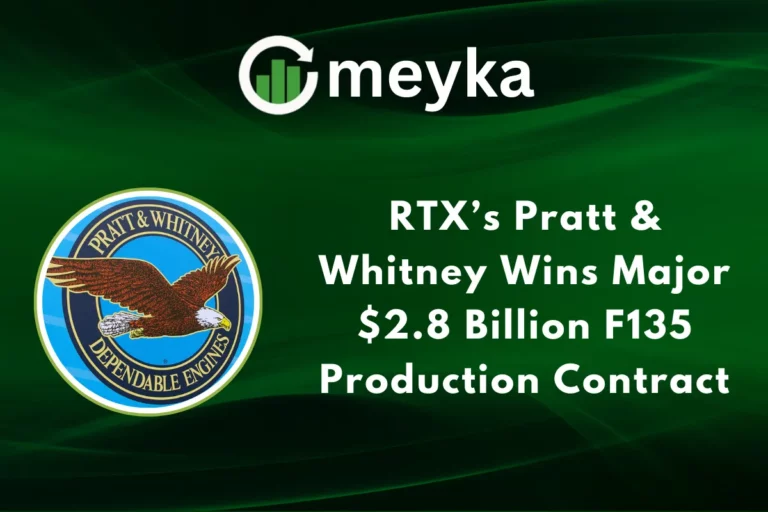Oracle Price Outlook Improves as UBS Lifts Target to $380, Calling It ‘Too Cheap to Ignore’
In today’s rapidly evolving AI stocks landscape, one of the standout stories is the resurgence of Oracle Corporation. The company has sparked renewed investor interest by blending legacy strengths with bold bets on cloud and AI infrastructure. At the core of this shift is the Oracle Price outlook, which has improved markedly as major brokerages update their expectations.
Why the Oracle Price Outlook Just Got Better
UBS Raises Target to $380
Analyst research firm UBS has just bumped its price target on Oracle from $360 to $380, reaffirming a “Buy” rating and calling the stock “too cheap to ignore.” The upgrade reflects not only confidence in Oracle’s current business but also its long-term trajectory in the cloud and AI sectors.
Strong Cloud/AI Momentum
Oracle’s recently disclosed guidance shows that its cloud infrastructure business (OCI) is expected to hit around $166 billion in revenue by FY2030, with the order backlog exceeding $500 billion. These numbers suggest the company is well-positioned among the leading players in the “AI stocks” race and that the market may have underestimated its potential.
Valuation Appeal
At the raised target, UBS argues that Oracle is being priced at roughly 15× FY2030 earnings, a relatively modest multiple given the scale of the cloud/AI opportunity ahead. In other words, the market may be discounting too much of the future already built into Oracle’s business, boosting the appeal of its “cheap now, expensive later” narrative.

What This Means for Oracle Investors
Upside Potential from Current Levels
Given that Oracle shares were trading significantly below the $380 mark when the target was raised, the implication is clear: investors may have 20%–30% upside potential, assuming Oracle hits its guidance and executes well. This improved Oracle Price outlook gives the stock renewed appeal in a sector crowded with buzz but light on proven execution.
Catalysts to Watch
- Large-scale cloud/AI deals: As Oracle wins major contracts for GPU-heavy data centre workloads, its margins and growth story get validated.
- Margin improvements: With scale and efficiency, the cloud business should move from early-stage investment to profitability.
- Backlog conversions: A backlog of $500 billion+ means revenues in future periods are increasingly visible, reducing risk for investors.
- AI stock momentum: As AI becomes more pervasive, companies like Oracle that combine software heritage + infrastructure scale may benefit in disproportionate ways.
Risks and Considerations
While the improved price target is compelling, potential headwinds remain:
- Heavy CapEx and margin pressure: The build-out of infrastructure could compress margins in the near term.
- Competitive intensity: Oracle competes with heavyweights like Microsoft Corporation, Amazon.com, Inc., and other cloud/AI specialists. Execution missteps could stall momentum.
- Macro & regulatory risks: Slowing enterprise spending or regulatory constraints on AI/data may impact growth.
Despite these risks, the upgraded target from UBS and the improving fundamentals point to a meaningful upgrade in the Oracle Price narrative.
How Oracle Fits in the Broader Stock Market and AI Trend
A Flag-Bearer Among AI Stocks
Oracle is increasingly part of the core conversation around stock market winners amid the AI boom. Unlike some speculative AI plays, Oracle combines long-standing enterprise software franchises with infrastructure for next-generation workloads. That blend helps it appeal to both value and growth investors.
Stock Research Perspective
From a stock research perspective, Oracle presents a unique combination of strong tailwinds from cloud and AI growth. The company also provides clear long-term guidance that adds visibility to its future performance. Its current valuation still leaves room for meaningful upside potential. Analysts are raising both their price targets and confidence levels, reflecting real improvement within the company.
Investor Strategy Implications
For investors looking at the sector, Oracle now presents a “safer” entry among AI-related names. The improved price outlook, from a reputable firm like UBS, gives a clearer benchmark. That makes Oracle not just a speculative AI stock, but a strategic investment play. Timing still matters: entering before major cloud/AI catalysts may offer additional upside.
The Revised Oracle Price Outlook
- UBS raised its target on Oracle to $380, citing improved cloud/AI outlook.
- Oracle’s backlog (~$500 billion+) and FY2030 revenue target (~$166 billion for OCI) underpin the bullish view.
- The valuation (15× FY30 earnings) is considered modest for the growth potential, enhancing the upside case.
- Investors stand to gain 20–30% potential from current levels if performance meets expectations.
- Key risks include margin pressure, competitive risks, and macroeconomic headwinds.
- In the wider context of AI stocks, Oracle is emerging as one of the more grounded and strategic plays.
Conclusion
The latest Oracle Price upgrade from UBS underscores a growing recognition of the company’s transformation. Oracle is no longer just a traditional software firm, it’s becoming a major player in cloud and AI infrastructure. With strong financial visibility, a growing backlog, and expanding margins, the company’s long-term story looks stronger than ever.
At the new $380 price target, Oracle appears too cheap to ignore, especially for investors seeking a blend of stability and exposure to the AI revolution. While risks remain, the upside potential, supported by solid execution, makes Oracle a compelling stock to watch in 2025 and beyond.
FAQ
The latest target from UBS is $380 per share, up from $360 previously.
Analysts believe that Oracle’s cloud/AI growth trajectory is under-priced: with large contract backlogs and long-term guidance in place, the current valuation does not yet reflect the full opportunity.
Key drivers include its cloud infrastructure business (OCI), growing demand for AI workloads, large enterprise contracts, and its software legacy, which allows cross-selling and bundling of services. These reinforce the improved Oracle Price outlook.
Disclaimer:
This content is made for learning only. It is not meant to give financial advice. Always check the facts yourself. Financial decisions need detailed research.






